▼ India - Third largest aviation market in the world! [05-31-17]
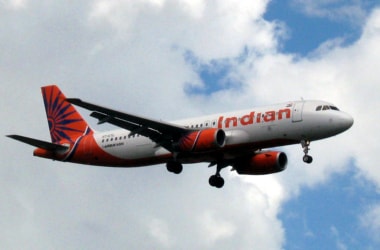 The civil aviation industry in India has emerged as one of the fastest growing industries in the country during the last three years. The civil aviation industry in India has emerged as one of the fastest growing industries in the country during the last three years.
With a 19 percent growth in domestic passenger traffic from about 6.1 crore in 2014 to 10 crore in 2016-17, India is now the third largest aviation market in the world, with the promise to grow even further.
What is most impressive about this growth is its inclusive nature defined by the Regional Connectivity Scheme - UDAN, that has made air travel possible for even the common man in remote areas.
The average or median airfares fell by 18 percent during 2016-17, making flying more affordable for the common man.
Scheduled domestic flight movements also rose from 7 lakh in 2014 to 8.2 lakh in 2016, an 8.2 percent CAGR growth.
As against 395 aircrafts in the fleet of Indian carriers, there are 496 aircrafts in operation today, and another 654 are under purchase.
Route Dispersal Guidelines have been rationalized, multiple provisions have been made for MRO service providers and a slew of initiatives like the AirSewa portal, enhanced compensation for cancellation and boarding denial have been taken for improving passenger convenience
The Regional Connectivity Scheme UDAN has been by far the most path-breaking achievement of the Ministry.
31 currently served, 12 under-served and 27 unserved airports are now connecting 128 RCS routes across the country.
50 airports are being revived and 13 lakh new UDAN seats are being added annually under the first round of UDAN for a Viability Gap Funding of INR 205 crore.
The Ease of Doing Business by allowing 100 % FDI in domestic scheduled air transport, Open Skies Service Agreements offers to 49 countries and 5 SAARC nations etc, developing a robust security architecture by complying with ICAO requirements, Anti Hijacking Act etc, promoting innovative technology like GAGAN, India’s first navigation based system to improve accuracy of air navigation services and focusing on skill development in the aviation sector has been benefiting India.
The first Executive Aviation Course was launched by India’s first Aviation University in February 2017. 800 ATCs were recruited by AAI in the last 2 years and more than 400 are planned to be recruited in 2017.
Aerospace and Aviation Skill Sector Council has been formed to monitor growth of skill development.
The civil aviation sector in India has undergone a complete transformation in the last three years with India emerging as the world’s third largest aviation market.
As against 70-75 airports in the country in all these years, India has more than 100 airports with the implementation of UDAN.
|
▼ IOC becomes most profitable PSU [05-30-17]
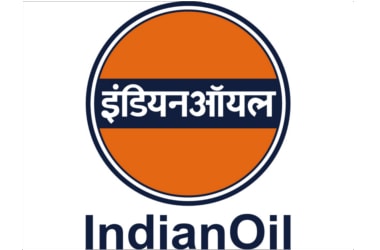 Indian Oil Corp (IOC) has overtaken Oil and Natural Gas Corp (ONGC) to become India’s most profitable state-owned company. Indian Oil Corp (IOC) has overtaken Oil and Natural Gas Corp (ONGC) to become India’s most profitable state-owned company.
IOC, which has for decades been India’s biggest company by turnover, posted a 70 per cent jump in net profit to INR 19,106.40 crore in the financial year ended March 31, 2017.
This was more than the INR 17,900 crore net profit ONGC posted in the 2016-17 fiscal, making IOC the most profitable PSU, according to earning statements of the companies.
Billionaire Mukesh Ambani-led Reliance Industries retained the crown of being India’s most profitable company for the third year in a row, posting a net INR 29,901 crore in financial year 2016-17.
Tata Consultancy Services, India’s largest software services exporter, with a net profit of INR 26,357 crore was the second most profitable company in the country.
ONGC was long India’s most profitable company but lost the crown to private sector Reliance and TCS a couple of years back. It has now been unseated as the most profitable PSU by IOC.
In the previous 2015-16 fiscal, IOC had a net profit of INR 11,242.23 crore as compared to ONGC’s INR 16,140 crore.
While IOC Chairman B Ashok attributed the profit growth to higher refining margins, inventory gains and operational efficiencies, ONGC Chairman and Managing Director Dinesh K Sarraf said the company lost INR 3,000 crore in net profit due to government’s natural gas pricing policy that has made the business economically unviable.
The BJP-led government had in October 2014 evolved a new pricing formula using rates prevalent in gas surplus nations like the US, Canada and Russia to determine rates in a net importing country.
Prices have halved to $2.48 per million British thermal unit since the formula was implemented.
Sarraf said the company lost INR 5,010 crore in revenue on natural gas business from 35 per cent drop in gas prices in last one year.
|
▼ New definition of a startup [05-26-17]
 The Department of Industrial Policy and Promotion (DIPP), which is the nodal body for Start-up India, has amended the definition of a start-up. The Department of Industrial Policy and Promotion (DIPP), which is the nodal body for Start-up India, has amended the definition of a start-up.
As per the new definition, an entity will be considered as a Start-Up if its turn over is less than INR 25 crore and has not completed seven years from the date of its incorporation/registration.
In the definition, the change is with respect to the time period which is currently five years. The new definition has increased it to 7 years taking into the consideration the long gestation period involved in establishing start-ups.
The scope of definition of start-up will also be widened to include scalability of business model with potential of employment generation or wealth creation.
An entity that has completed 7 years from the date of its incorporation or if its turnover exceeds INR 25 crore, it will cease to be a start-up.
The process of recognition of an entity as a start-up will be through an online application made over the mobile app/portal set up by the DIPP.
For the Start-Ups in the biotechnology sector, they will be considered as start-ups for a period of up to 10 years from the date of incorporation/registration.
Start-ups will not require a letter of recommendation from an incubator or an industry association to get tax benefits under the Start-up India action plan.
However, the entities should obtain a certificate of an eligible business from an inter- ministerial board of certification as constituted by the DIPP to claim tax benefit
An entity will be deemed as a start-up if it is working towards innovation, development or improvement of products/processes/services, or if it is a scalable business model with potential for employment generation or wealth creation.
|
▼ Best performance award to Cochin Port Trust [05-24-17]
 Cochin Port Trust has received two Best Performance Awards from Ministry of Shipping for the highest growth in operating surplus and also for achieving third highest growth in cargo traffic among the major ports in the year 2016-17. Cochin Port Trust has received two Best Performance Awards from Ministry of Shipping for the highest growth in operating surplus and also for achieving third highest growth in cargo traffic among the major ports in the year 2016-17.
Cochin Port Trust has registered an operating profit of INR 127.72 crore during 2016-17 as against INR 70.89 crore during 2015-16 recording a growth of 80 per cent.
Operating profit during 2014-15 was INR 19.55 crore.
The Port handled 25.01 MMT cargo during 2016-17 with a growth of 13.2 per cent over 22.10 MMT handled in 2015-16.
The containers handled during 2016-17 is 4.91 lakh TEUs with a growth of 17.0 per cent over 4.20 lakh TEUs in 2015-16.
|
▼ GST council finalises 4 slab service tax structure [05-22-17]
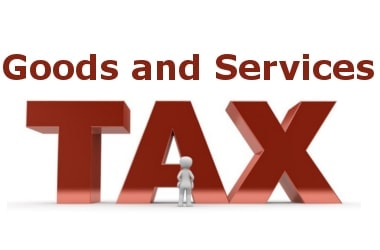 The GST Council headed by finance Minister Arun Jaitley has finalised a 4-slab service tax structure at the rates of 5, 12, 18 and 28 per cent as against the single rate of 15% levied on all taxable services. The GST Council headed by finance Minister Arun Jaitley has finalised a 4-slab service tax structure at the rates of 5, 12, 18 and 28 per cent as against the single rate of 15% levied on all taxable services.
GST regime is scheduled to be implemented from July 1.
In the next GST Council meeting, tax rates on gold and other precious metals will be taken up for discussion.
Luxury hotels, gambling, race club betting and cinema services will attract a tax rate of 28%.
Education, healthcare and non-AC rail travel will remain exempted from the GST tax regime.
However, the states will be given the option to levy additional taxes on cinema to compensate for the revenue losses entailed due to merging of entertainment tax with GST.
At present, the total tax incidence on cinema including entertainment and 4-slab service tax is in the range of 55%.
The states need to use the legislative route if it wants to levy additional tax on cinema. States will also be permitted to levy any new tax as the taxation powers of the states have only been restricted and not abolished after the rollout of GST.
Telecom and financial services will be taxed at a rate of 18%. Transport services will be taxed at the rate of 5%.
Cab aggregators like Ola and Uber will have to pay 5% under GST in place of 6%. AC rail travel will attract 5% tax. Economy class air travel will attract 5% GST while business class will attract 12%.
Travelling on metro, local train and religious travel such as Haj Yatra would be exempted from GST.
The e-commerce players like Flipkart and Snapdeal would be required to shell out 1% Tax Collected at Source (TCS).
Non-AC restaurants and AC restaurants will attract a GST of 12% and 18% respectively.
Advertisements published in newspapers will attract 5% GST. At present it is exempt from 4-slab service tax.
GST Council: Know More
- ST Council is a federal forum with both centre and states in India on board formed in September 2016.
- It is made of: The Union Finance Minister (as Chairman), The Union Minister of State in charge of Revenue or Finance, and The Minister in charge of Finance or Taxation or any other Minister, nominated by each state government.
- The decisions of the GST Council are made by three-fourth majority of the votes cast. The centre has one-third of the votes cast, and the states together have two-third of the votes cast.
- Each state has one vote, irrespective of its size or population.
- The Secretary (Revenue) will be appointed as the Ex-officio Secretary to the GST Council. The Chairperson, Central Board of Excise and Customs (CBEC), will be included as a permanent invitee (non-voting) to all proceedings of the GST Council.
- One post of Additional Secretary to the GST Council in the GST Council Secretariat (at the level of Additional Secretary to the Government of India) will be created.
- Four posts of Commissioner in the GST Council Secretariat (at the level of Joint Secretary to the Government of India) will also be created.
|
▼ GST Council finalises tax rates, rules [05-19-17]
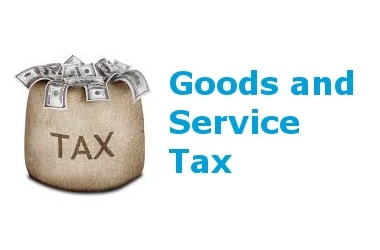 The GST Council headed by finance Minister Arun Jaitley has finalised tax rates and has approved all the seven rules for the GST regime that is scheduled to be implemented from July 1. The GST Council headed by finance Minister Arun Jaitley has finalised tax rates and has approved all the seven rules for the GST regime that is scheduled to be implemented from July 1.
The remaining two rules of the GST pertaining to transition and return is under the examination of the legal committee.
In total, the council has fixed the rates of 1211 items. It will decide rates of some other items and services in the coming days.
Out of 1211 items, 81% of the items will attract tax of 18% or less. Only the remaining 19% of items will attract a highest rate of 28%.
Household items like Sugar, Tea, Coffee and edible oil will attract 5% levy. Cereals and milk will be exempted from the tax.
Manufactured goods will attract 18% levy. Luxury cars will attract 28% GST in addition to a cess of 15%.
Small petrol cars will attract 28% GST plus a 1% cess, and diesel cars will be taxed at 28% plus 3% cess.
Capital goods, a key asset for the manufacturing sector, will be taxed at 28%. Aerated drinks will fall under the 28% tax bracket.
GST Council Overall Tax: Know More
- The GST Council has not increased the overall tax in any of the 1211 items but have reduced tax on many items.
- For example, Soap, which is now taxed at the rate of 22-24%, will be taxed at 18%. The present tax incidence in excess of 28% on luxury items will be treated as cess and will be deposited in the corpus for compensating states if they suffer any revenue loss.
- Food items are expected to become cheaper. Daily use items like hair oil, toothpaste, and soap are kept in the 18% tax slab instead of 28%.
- The cost of energy generation is expected to become less as tax incidence on coal has been reduced from 11% to 5%.
- GST regime is expected to unify the whole of the country into a common market eliminating both Central and State levies.
- GST is also expected to increase state and federal tax revenues, ease inflation and boost economic growth by 1-2% points in the medium term.
|
▼ IT dept launches new portal [05-19-17]
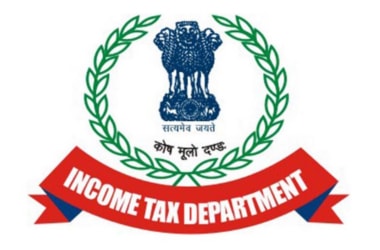 Income Tax Department (ITD) has initiated Operation Clean Money to investigate tax evaders. As a part of the operation, the government has launched a website on ‘Operation Clean Money’ operation. Income Tax Department (ITD) has initiated Operation Clean Money to investigate tax evaders. As a part of the operation, the government has launched a website on ‘Operation Clean Money’ operation.
The Operation Clean Money’ portal has been designed by the Central Board of Direct Taxes (CBDT). Initial phase of the operation involves identification of around 18 lakh persons who have made large deposits or purchases between 9th November to 30th December 2016, which do not appear to be in line with the tax payer’s profile.
The provision of online verification of these transactions is aimed at reducing the compliance cost for the taxpayers while optimising the resources of the Income Tax department.
The PAN holders can view the information in the portal. The taxpayers would be allowed to submit online explanation without the need to visit the Income Tax Office.
As a reminder, e-mail and SMS will also be sent to the taxpayers for submission of online response on the portal. The IT department will make use of the data analytics to select cases for verification.
After selection of cases, additional information requested would be communicated electronically. On getting the information, the portal will get dynamically updated.
The taxpayers covered under this phase are required to submit their responses within 10 days in order to avoid further notice and enforcement actions under the Income Tax Act. The response provided by the tax payer would be analyzed against available information with the department.
If response found justified, the verification would be closed. The verification will also be closed if the cash deposit has been declared under Pradhan Mantri Garib Kalyan Yojna (PMGKY).
Operation Clean Money: Know More
- Operation Clean Money was launched immediately after government’s demonetisation drive in order to bring the tax evaders with undeclared incomes under the tax net.
- The income tax department has so far identified about 1.8 million persons and asked them to explain their deposits, pay tax or disclose past undisclosed income through the Pradhan Mantri Garib Kalyan Yojana.
|
▼ Indian coir sector revenue on record high! [05-17-17]
 The Indian Coir sector’s revenue from exports touched an all time high of INR 2282 Cr by value and 9.57 Metric Tonnes in quantity in the 2016-17 financial year. The Indian Coir sector’s revenue from exports touched an all time high of INR 2282 Cr by value and 9.57 Metric Tonnes in quantity in the 2016-17 financial year.
The Coir Board Chairman is C P Radhakrishnan.
The coir sector had fetched export revenue of Rs 1630 Cr in the financial year 2015-16 against INR 1,476 Cr achieved in fiscal year 2014-15.
Indian coir sector has tremendous potential to grow and provide employment to a large number of people.
Coir Board is going ahead with a project to fabricate a versatile spinning machine capable of producing yarn with uniform thickness in large quantity.
The government is considering to introduce a scheme that would extend financial support upto INR 2.50 Cr to the sector in order to promote larger investments by entrepreneurs.
|
▼ INR 20 lakh turnover companies to specify PAN [05-16-17]
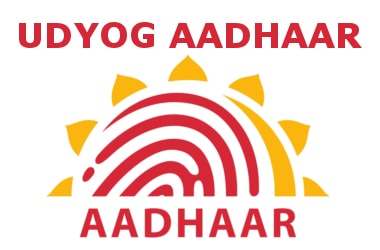 Organisations with over Rs 20 lakh turnover will have to specify the PAN while filling the Udyog Aadhaar Memorandum for registration. Organisations with over Rs 20 lakh turnover will have to specify the PAN while filling the Udyog Aadhaar Memorandum for registration.
These organisations include companies, limited liability partnerships, cooperative societies, societies and trusts.
The decision, taken at a meeting chaired by the MSME Secretary K K Jalan recently.
This will be implemented after two months of the Goods and Services Tax coming into operation.
The GST regime is likely to come into force on July 1.
Presently, it is not mandatory for these organisations to mention the PAN number in the Udyog Aadhaar Memorandum.
However, since it will be compulsory for firms with turnover above INR 20 lakh to have a PAN number under the GST, this decision has been taken.
Apart from the Permanent Account Number (PAN) and Aadhaar, micro, small and medium enterprises (MSMEs) will also have to attach a chartered accountant's certificate for participating in public tenders.
Udyog Aadhaar is for existing firms. The upcoming units do not need to apply for its registration.
The meeting of the Advisory Committee under the MSMED Act decided that there could be a ministry sponsored MSME specific M Tech course, which will focus mainly on practical shop-floor training, the business model that can be worked out among the MSME Associations present in the meeting, a suggestion mooted by the All India Council for Technical Education.
In the course curriculum, 20-30 specific activities can be listed after due deliberations.
The MSME ministry had earlier issued a one-page Udyog Aadhaar Memorandum, which must be filled online by all micro, small and medium enterprises (MSMEs), for simplifying the registration procedure for entrepreneurs and promoting ease of doing business.
|
▼ India ranks 26th in World Bank electricity accessibility list [05-16-17]
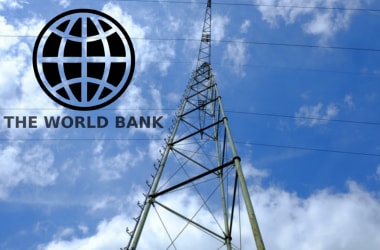 India has jumped 73 spots to be ranked 26th in World Bank’s electricity accessibility list. The country was ranked 99th in 2014. India has jumped 73 spots to be ranked 26th in World Bank’s electricity accessibility list. The country was ranked 99th in 2014.
Out of the 18,452 villages which lacked electricity, over 13,000 has been provided access to electricity.
In addition, a person applying for new electricity connection would be able to get the connection within 24 hours in areas where power infrastructure is available and in areas where there is no power infrastructure, electricity connection would be given in a week.
The government’s rural electrification programme is on track for completion within the targeted 1,000 days.
The flagship scheme Deendayal Upadhyaya Gram Jyoti Yojana (DDUGJY) was launched by Prime Minister Narendra Modi with an aim to provide 24/7 uninterrupted electricity supply to each rural household across the country by 2022.
It aims to strengthen sub-transmission and distribution network to prevent power losses.
It focuses on feeder separation for rural households and agricultural purpose.
The Ministry of Power has also launched a new app, GARV-II to provide real-time data of all six lakh villages of the country.
Ministry of Power
- Formed: 2 July 1992
- Preceding Ministry: Ministry of Energy Sources
- Jurisdiction: Government of India
- Headquarters: Shram Shakti Bhawan, Rafi Marg, New Delhi, India
- Annual budget: INR 13,881.14 crore (US$2.2 billion) (2017-18 est.)
- Minister responsible: Piyush Goyal, Minister of State (Independent Charge)
- Website: www.powermin.nic.in
|
▼ New base year for IIP, WPI [05-15-17]
 The government has released new-look index of industrial production (IIP) and the wholesale price index (WPI) , which have been built on the new series of data. The government has released new-look index of industrial production (IIP) and the wholesale price index (WPI) , which have been built on the new series of data.
The new IIP and WPI series has been released by Chief Statistician of India and Secretary, Ministry of Statistics & Programme Implementation, and Secretary, Department of Industrial Policy and Promotion to usher in greater accuracy and improved synchronisation leading to better policies.
Instead of the earlier 2004-05, base year for the IIP and the WPI will be 2011-12.
Already, the Consumer Price Index (CPI), the Gross Domestic Product (GDP) and gross value addition etc., have 2011-12 as the base year.
The common base year of 2011-12 is aimed at reducing discrepancies.
WPI
The number of items covered in the new series of the WPI has increased from 676 to 697.
Overall, 199 new items have been added and 146 old items have been dropped.
Under the primary articles, new vegetables and fruits like radish, carrot, cucumber, bitter gourd, mosambi (sweet lime), pomegranate, jackfruit, and pear have been added.
Under the mineral group, new items like copper concentrate, lead concentrate and garnet have been added and other items like copper ore, gypsum, kaolin, dolomite, and magnesite have been dropped.
Under the manufacturing items, 173 new items including conveyer belt, rubber tread, steel cables, tissue paper, and wooden splint have been added, while 135 items like khandsari, poppadom, and video CD players have been taken out.
Under the new series of WPI, weight of manufactured items has decreased to 64.2 per cent from 64.9 per cent in old series.
Similarly, the weight of fuel and power has decreased to 13.1 per cent from 14.9 per cent. On the other hand, the weight of primary items have increased to 22.6 per cent from 20.1 per cent.
IIP
The IIP has been revised after a gap of 13 years and the obsolete items which are no longer in production in the index have been replaced with contemporary products in the new index making it to be more comprehensive in nature.
Introduction of the new series would make all the key macroeconomic indicators such as IIP, WPI, CPI and national accounts to have a common base of 2011-12, paving way for easier comparisons among them. The new series indices have painted a healthier picture of the Indian economy in 2016-17 than that of the old series.
The new series of IIP will include 809 manufacturing products and 55 mining products that are re-grouped into 521 item groups.
The new series of IIP will include technology items like smart phones, tablets, LED television etc.
A technical review committee has also been established to identify new items by ensuring that the series remains relevant.
The committee is slated to meet at least once a year.
|
▼ NITI Aayog’s task force [05-11-17]
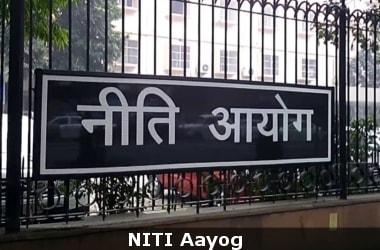 The government has set up a task force headed by NITI Aayog vice-chairman Arvind Panagariya to come up with a methodology to generate timely and reliable employment data. The government has set up a task force headed by NITI Aayog vice-chairman Arvind Panagariya to come up with a methodology to generate timely and reliable employment data.
The Prime Minister Narendra Modi himself has initiated the process and has asked the task force to submit its recommendations at the earliest.
The other members of the task force are labour secretary M. Sathiyavathy, secretary of the statistics department T.C.A. Ananth, NITI Aayog’s Pulak Ghosh and Manish Sabharwal, chairman and co-founder of staffing firm Teamlease Services Ltd.
India lacks reliable data on jobs. The available data is currently outdated.
The data on jobs in the informal sector which employs country’s majority of the workforce is not easily available.
Also, the data released by the Labour Bureau is restricted to the organized sector. National Sample Survey Office (NSSO) data which is the most comprehensive data available on jobs is generated with a time lag.
Better data on jobs data will help policy planners assess the impact of policies on jobs and will shed light on the actual size of the informal economy
India’s Labour Market
- India’s labour market constitutes of over 470 million people.
- According to CRISIL, around 18 million people enter the workforce every year.
- As per the data with the NSSO, India had created around 59.9 million jobs between 1999-2000 and 2004-05 and created nearly two million jobs between 2004-05 and 2009-10.
- Between 2009-10 and 2011-12, 13.9 million jobs were created in the country.
|
▼ IMF cautions against ageing populations [05-11-17]
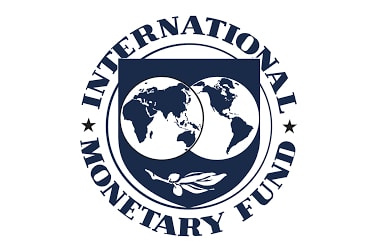 The International Monetary Fund (IMF) called on Asian economies to learn from Japan’s experience and act early to cope with rapidly ageing populations, warning that parts of the region risk getting old before becoming rich. The International Monetary Fund (IMF) called on Asian economies to learn from Japan’s experience and act early to cope with rapidly ageing populations, warning that parts of the region risk getting old before becoming rich.
Asia has enjoyed substantial demographic dividends in the past decades, but the growing number of elderly is set to create a demographic “tax” on growth, according to the IMF.
Adapting to ageing could be especially challenging for Asia, as populations living at relatively low per capita income levels in many parts of the region are rapidly becoming old.
Some countries in Asia are getting old before becoming rich.
The population growth rate is projected to fall to zero for Asia by 2050 and the share of working-age people, now at its peak, will decline over the coming decades, the report said.
The share of the population aged 65 and older will increase rapidly and reach close to two-and-a-half times the current level by 2050, it said.
That means demographics could subtract 0.1 percentage point from annual global growth over the next three decades, it said.
The challenges are particularly huge for Japan, which faces both an ageing and shrinking population. Its labour force shrank by more than 7 per cent in the past two decades.
The high percentage of its citizens living on pensions may be behind Japan’s excess savings and low investment, which are weighing on growth and blamed in part for keeping inflation below the Bank of Japan’s 2 per cent target.
Japan’s experience highlights how demographic headwinds can adversely impact growth, inflation dynamics and the effectiveness of monetary policy.
The IMF called on Asian nations to make changes like introducing credible fiscal consolidation plans, boosting female and elderly labour force participation, and revamping social safety nets.
|
▼ Ministry of Urban Development to launch Liveability Index [05-10-17]
Ministry of Urban Development will launch measuring of Liveability Index of cities in the next month. The index will be based on indigenously evolved methodology.
The Ministry of Urban Development has already released a detailed document on “Methodology for Collection and Computation of Liveability Standards in Cities”.
The index will measure the Liveability Standards of 140 cities including 53 cities with population of 1 million and above.
To carry out the assessment, the Ministry has invited bids for selecting the agency. The aim of the assessment will be to instil a sense of healthy competition among cities and towns in the country and to help them focus their attention on improving governance and infrastructure availability.
Cities will be assessed on 15 core parameters relating to Governance, social infrastructure pertaining to education, health and safety and security, economic aspects and physical infrastructure like housing, open spaces, land use, energy and water availability, solid waste management, pollution etc.
Totally, based on 79 aspects, the Cities would be ranked on the Liveability Index.
A sense of healthy competition is being promoted among cities and towns in the country to focus their attention on improving governance and infrastructure availability.
Government officials and experts from India, Indonesia, Sri Lanka and Bangladesh are participating in the workshop for sharing respective experiences on decentralization and empowerment of local bodies.
Ministry of Urban Development - Minister responsible : Shri Venkaiah Naidu
- Headquarters : Nirman Bhawan, New Delhi
- Formed : 1952
- Jurisdiction : Republic of India
|
▼ Indian economy to grow 7.4% in 2017: ADB [05-4-17]
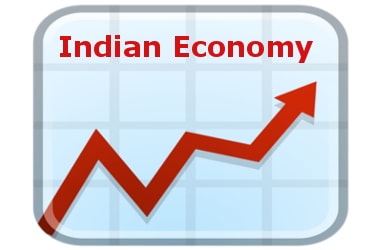 The Indian economy will grow 7.4 per cent this fiscal and 7.6 per cent in the next as the bankruptcy and GST laws will help create a better business friendly environment. The Indian economy will grow 7.4 per cent this fiscal and 7.6 per cent in the next as the bankruptcy and GST laws will help create a better business friendly environment.
This is as per the Asian Development Bank (ADB).
Ahead of its 50th annual meeting to be attended by finance minister and central bank governors of member nations, ADB indicated new bankruptcy law will make it easier to do business in India.
The growth rate compares to 7.1 per cent of the previous fiscal.
Over 7 per cent growth rate is high if one compares it to other emerging market economies and also China.
Behind this is cyclical factor, improved terms of trade. The Indian government adopted new bankruptcy law that improved the business enabling environment.
That is the a short-term and medium-term factor behind the gross acceleration in India.
On the impact of demonetisation of old 500 and 1,000 rupee notes that took out 86 per cent of the currency in circulation, it obviously generated short-term decline in cash-based transactions and consumer sentiment.
ADB has not studied if the demonetisation had any consequences on black money.
The GST, the biggest indirect tax reform since independence, together with the new bankruptcy law are big positives for India.
The bankruptcy law and the GST will help in creating a better business enabling environment, which seems to be a factor behind this gross acceleration of India,.
The rupee strengthened to 64.2 against the US dollar and has been gaining strength as compared to other emerging economy currencies.
The rupee has appreciated by over 5 per cent against the US dollar since January.
ADB: Know More
- Headquarters: Mandaluyong, Philippines
- President: Takehiko Nakao
- Founded: 19 December 1966
- Membership: 67 countries
- Staff: 2997 employees
- Purpose: Economic development
- Motto: Fighting poverty in Asia and the Pacific
|
▼ India to launch IIP with new base year [05-3-17]
 India will unveil a new series of Index of Industrial Production with a base year 2011-12 on May 9 with an aim to map economic activities more accurately. India will unveil a new series of Index of Industrial Production with a base year 2011-12 on May 9 with an aim to map economic activities more accurately.
The new series for Index of Industrial Production (IIP), which captures industrial activities on monthly basis, will be launched by Chief Statistician and MOSPI Secretary TCA Anant.
A high-level panel had firmed up the methodology for the IIP with new base year of 2011-12.
Currently, the IIP is calculated on base year of 2004-05.
The change in baseline for the IIP is expected to bring in more accuracy in mapping the level of economic activity and calculating other numbers like national accounts.
Work is also in progress to change the base year for the wholesale price index (WPI) to 2011-12 year.
The Central Statistics Office (CSO) has already changed the base year for the country's national accounts, including the gross domestic product (GDP) and the gross value addition (GVA).
The retail inflation based on the consumer price index (CPI) is also calculated on the base year of 2011-12.
For long, economists and think tanks have been pitching for release of new time series of the IIP and the WPI so that GDP numbers can be based on more accurate and realistic data.
What is the Base Year and IIP?
- The base year is revised periodically to capture the changes in the structure and composition of the industry.
- This is over time due to technological changes, economic reforms and consumption pattern of the people.
- The IIP gives a broad outlook on output of various types of goods like basic, consumer and capital ones, which helps in gauging the level of economic progress and investments in the economy.
- India will unveil a new series of Index of Industrial Production with a base year 2011-12 on May 9 with an aim to map economic activities more accurately.
|
▼ GST to initiate 6.8% growth this year: IMF [05-2-17]
The ambitious Goods and Services Tax to be implemented from July 1 would help raise India’s medium-term growth to above eight per cent, the International Monetary Fund has indicated.
The reforms being done is expected to pay off in terms of higher growth in the future.
The IMF believes that India is going to continue to grow at a fast pace, with a projected 6.8 per cent rate for Financial Year 2016-17 and 7.2 per cent in 2017-18.
India’s foreign exchange (Forex) reserves rose by $1.25 billion as on April 21, 2017.
According to the Reserve Bank of India’s weekly statistical supplement, the overall Forex reserves increased to $371.13 billion from $369.88 billion reported for the week ended April 14.
India’s Forex reserves comprise of foreign currency assets (FCAs), gold, special drawing rights (SDRs) and the RBI’s position with the International Monetary Fund (IMF).
|
| Chronology of events |
|
The Indian Railways will use radio-frequency identification tags (RFID) for tracking of wagons, coaches and locomotives to ensure effective and transparent functioning.
|
|
Leveraging information technology in a big way, the public transporter has issued instructions for equipping all wagons with RFID tags to begin with.
|
|
Micro-blogging website Twitter has partnered with Bloomberg Media to stream news round-the-clock on the social networking platform.
|